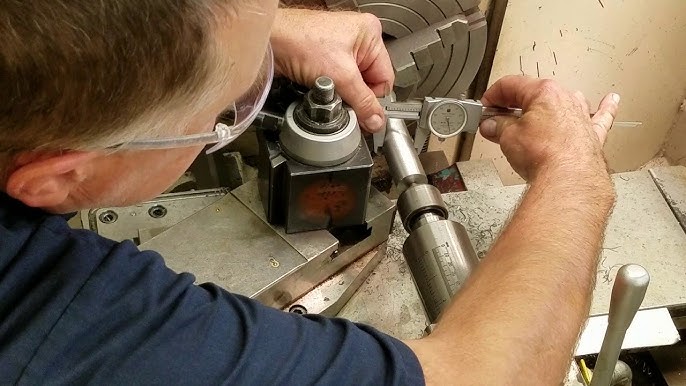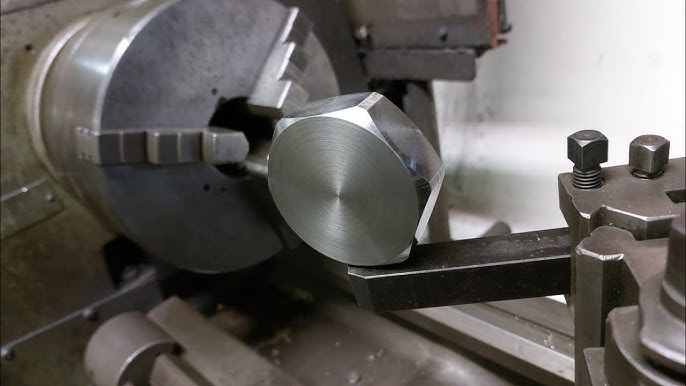
by A.greenboim | Apr 24, 2025 | Blog
Maintaining a clean and inviting swimming pool is a source of pride for many homeowners, yet the appearance of algae can spoil this sense of accomplishment. Understanding what causes algae in pool is crucial for both prevention and effective maintenance. This article will explore the reasons behind algae growth and the steps you can take to keep your pool clear and healthy.
Understanding Algae Growth
What Is Algae?
Algae are simple, plant-like organisms that can thrive in water, especially when conditions like sunlight and nutrients are favorable. It can appear in a variety of colors, including green, yellow, black, and pink.
Common Types of Pool Algae
There are several types of pool algae that you may encounter: green algae, yellow or mustard algae, and black algae. Each requires specific treatment approaches.
Factors Contributing to Algae Growth
Insufficient Sanitization
Applying the proper amount of chlorine or other sanitizers is crucial for preventing algae growth. Insufficient levels can lead to an ideal environment for algae.
Imbalanced pH Levels
Maintaining balanced pH levels is important as imbalances can encourage algae to bloom. Regular testing helps maintain these levels effectively.
Poor Circulation
Ensure that your pool pump and filters are working efficiently. Poor water circulation allows algae to settle and grow.
Debris and Contaminants
Leaves, dirt, and other debris introduce nutrients that feed algae. Regular cleaning minimizes these entries.
How to Prevent Algae in Pools
Regular Pool Maintenance
Routine pool cleaning and maintenance, including skimming, vacuuming, and brushing walls, will help prevent algae from establishing.
Use of Algaecides
Occasionally using algaecide treatments can inhibit the start of algae growth. Be sure to use products that are safe for your specific pool type.
Proper Chemical Levels
Test your water regularly to ensure proper chemical balance. Immediate corrections to imbalances prevent the growth of algae.
Install Efficient Circulation Systems
Updating your pool system with energy-efficient pumps may enhance circulation and reduce stagnant water spaces.
For more advanced insights into pool technology, consider reading about leak detection systems with high sensitivity sensors.
Dealing with Algae after It Appears
Shock Treatment
When algae appear, a shock treatment introduces a high concentration of chlorine to eradicate algae quickly.
Brushing and Vacuuming
Removing algae from pool walls and floors with vigorous brushing, followed by vacuuming, ensures thorough removal.
Filter Cleaning
After algae removal, cleaning your filter ensures that all spores and residual particles are cleared out.
For more information on pool maintenance, visit this external guide on how to clean your pool effectively.
Innovative Approaches to Pool Cleanliness
Smart Pool Systems
Emerging technologies offer smart pool systems that automate the balance of chemicals, making algae prevention simpler.
Advanced Filtration Technologies
Learn more about the latest advancements in filtration technology with innovative ML algorithms on leak detection technologies.
Conclusion
Understanding what causes algae in pool is the first step in ensuring that you keep your swimming pool clear, safe, and enjoyable for you and your guests. Apply the strategies discussed in this article to prevent algae efficiently and enjoy all the benefits of a pristine pool.
FAQ
Why does algae grow in my pool?
Factors such as poor circulation, low sanitizer levels, and debris can foster algae growth.
How often should I test my pool water?
It’s recommended to test your pool water at least once a week for an accurate chemical balance.
What is the quickest way to remove algae?
Shock treatment and thorough brushing followed by vacuuming can efficiently remove algae.
This article contains affiliate links. We may earn a commission at no extra cost to you.

by A.greenboim | Apr 24, 2025 | Blog
In the realm of both woodworking and metalworking, a drill press is an essential machine known for its capacity to perform a variety of processes. While its primary function is to drill holes with precision, its capabilities extend far beyond this single task. Indeed, understanding what processes are commonly performed on a drill press in addition to drilling unveils a multitude of possibilities that enhance efficiency and workmanship.
In this detailed guide, we will explore these common processes, providing insight into how a drill press can serve as a multifaceted tool in your workshop. This exploration is pivotal for entrepreneurs and business leaders in industries reliant on manufacturing and design to leverage the full potential of their resources.
Understanding Your Drill Press: More Than Just Drilling
A drill press is more than just a stationary tool used for drilling. Its stability and versatility make it a favorite in professional and amateur workshops alike. To grasp its full potential, one must look beyond basic drilling and uncover the diverse array of processes commonly performed. Find out more about drill press uses.
Reaming: Enhancing Hole Accuracy
One of the prominent operations is reaming. This process involves enlarging a previously drilled hole with a larger reamer to create smoother and more accurate hole finishes. The reamer achieves this by shaving off the hole edges, providing a perfect finish for applications requiring precise dimensions.
Countersinking: Achieving Flush Finishes
Countersinking is performed to allow the head of a screw or bolt to sit flush with or below the surface of the material, creating a clean and smooth appearance. This is a common practice when aesthetics and functionality must align, such as in furniture making or any situation where a flat surface finish is necessary.
Boring: Enlarging Holes with Precision
Unlike drilling, which creates a hole in its initial pass, boring refers to enlarging an existing hole. This process enhances the diameter and depth of a hole, achieving sizes that standard drill bits cannot. It is crucial in manufacturing settings where precise hole dimensions are requisite.
Tapping: Crafting Threads in Holes
Tapping is the process of cutting threads into the wall of a drilled hole. This action enables screws or bolts to fasten securely into place. Achieving good threads requires precise alignment, and the drill press offers the stability necessary for uniform thread creation.
Sanding: Smoothing Surfaces Efficiently
Less commonly associated with a drill press, sanding can still be effectively performed by attaching a sanding drum. This transformation allows the drill press to act as a minor abrasive tool, used to smooth wood or metal surfaces to perfection.
Advanced Techniques and Custom Attachments
For the dedicated craftsman, the drill press allows further expansion through the use of custom attachments, increasing its application scope.
Mortising: Creating Clean, Square Holes
By attaching a mortising kit to the drill press, it can be used to create square or rectangular holes. This is particularly useful in woodworking, allowing for precise cutouts for joints and enhancing the overall stability and appearance of the construction.
Spot Facing: Perfecting Bearing Seats
Spot facing is a process tailored for ensuring a smooth and level surface for bearings or washers. Using a specialized tool on the drill press, it provides a leveled plane around holes, ensuring the proper fit for accompanying hardware.
Key Takeaways and Further Exploration
By broadening the applications of a drill press, professionals can achieve more complex and refined project results. Not only does it save time and financial resources, but it also enhances the quality and precision of work delivered.
In conclusion, exploring what processes are commonly performed on a drill press in addition to drilling expands the horizons of what’s achievable within your workshop. Learning and implementing these techniques can result in more comprehensive project outcomes and improve your craft to professional standards. For more in-depth look into multipurpose workshop tools, check out this resource about drill press.
FAQs
1. Can a drill press be used for milling?
While a drill press isn’t ideally designed for milling, with proper setup and precautions it can be used for light milling tasks. However, for extensive milling activities, a milling machine is recommended.
2. What safety measures should one take when using a drill press?
To ensure safety, always secure the material correctly, wear protective eyewear, and never make adjustments to the machine while it’s running. Understanding the safety guidelines is key for a safe workshop environment.
3. How does a drill press enhance drilling accuracy?
The device provides a stable platform, adjustable speeds, and consistent pressure, which allows for precise and accurate drilling compared to handheld drills. Such precision is vital in professional manufacturing and craftsmanship.
For entrepreneurs seeking innovation in other sectors, explore how the DripX leak detection system utilizes high sensitivity sensors. Discover how modern technology can similarly revolutionize your workflows.
To keep abreast of industrial advancements, consider the impact of using edge computing in systems like the DripX leak detection system. This showcases how adaptable technology can fundamentally alter efficiency and tracking capabilities.
This article contains affiliate links. We may earn a commission at no extra cost to you.

by A.greenboim | Apr 24, 2025 | Blog
The arbor is a crucial component in a milling machine, serving as the spindle extension that secures the cutting tool. Understanding its functions is vital for anyone involved in machining.
This article is tailored to provide an in-depth understanding for entrepreneurs and business leaders, illuminating the integral role of the arbor in enhancing milling machine efficiency.
Understanding the Basics of Milling Machines
The milling machine is a versatile piece of machinery, fundamental in shaping, drilling, and cutting metal. At its core, it involves the movement of the rotary cutters that remove material from a workpiece.
The Role of the Arbor
The arbor holds the cutting tool securely and ensures precise machining work. It’s the intermediate component that connects the various cutting tools to the machine spindle.
Breaking Down Arbor Components
An arbor is composed of several parts, such as the shaft, pilot, and sleeves, each playing distinct roles in machining processes.
Shaft Functionality
The shaft is the main axis that extends from the spindle, providing rigid support to the tool.
Pilot and Sleeve Significance
The pilot ensures alignment and the sleeves help accommodate various tool sizes, facilitating versatility.
Types of Arbors Used in Milling Machines
There are multiple types of arbors, including standard milling arbors, stub arbors, and screw arbors, each designed for specific tasks and machines.
Standard Milling Arbors
The most common type, standard milling arbors, are used for general milling operations.
Stub Arbors
Stub arbors are shorter and are ideal for milling operations that demand limited space.
Advantages of Using Arbors in Milling Machines
Arbors contribute to the machine’s accuracy and efficiency, offering stable tool holding which is essential for precise machining.
Enhanced Precision
They allow for exact adjustments, improving the quality of the cuts.
Versatility in Machining
By supporting various tools, arbors allow for versatile machining operations.
Maintenance of Milling Machine Arbors
Regular maintenance is crucial for ensuring the longevity and performance of milling machine arbors.
Routine Inspections
Regular checks for wear and tear can prevent accidents and prolong the equipment’s life.
The Impact of Arbors on CNC Milling
In CNC milling, arbors play a significant role in maintaining precision and efficiency, especially in automated machining processes.
Automation Enhancements
Ensuring the arbor’s integration in CNC can vastly enhance productivity.
Why Entrepreneurs Should Care About Milling Machine Arbors
Entrepreneurs and business leaders must understand the importance of arbors as they directly impact production efficiency and machinery costs.
Cost Efficiency
Investing in high-quality arbors can lead to significant savings in operational costs over time.
Impact on Production
Arbors influence production rates by improving precision and reducing idle times.
The Future of Arbors in Milling Machines
The evolution of technology suggests arbors will continue to improve, becoming more advanced and integrated within complex machining systems.
Conclusion
The milling machine arbor is indispensable for proper machining operations. Understanding its function can lead to improvements in production efficiency and cost management, crucial for business success.
FAQs
What is the primary role of an arbor in a milling machine?
The primary role is to support and secure the cutting tool with precision.
How does an arbor differ from other machine components?
An arbor serves as an extension of the spindle, specifically for holding cutting tools.
Are arbors used in all types of milling machines?
While many machines use arbors, not all require them, as it depends on the machining operations involved.
For further understanding, read this article on Milling Machines to learn how these machines operate and their historical development.
This article contains affiliate links. We may earn a commission at no extra cost to you.

by A.greenboim | Apr 24, 2025 | Blog
When exploring the rich landscape of manufacturing innovation, understanding where are Precision Matthews lathes made offers valuable insights into a world renowned for quality and precision. These lathes, used by industry leaders globally, have garnered attention from both hobbyists and professionals because they are crafted with meticulous care and cutting-edge technology. From the intricacies of their design to the selection of materials, every element speaks of a commitment to excellence. But before diving further into the production story, it’s helpful to explore the key players in this fascinating realm.
Introduction to Precision Matthews Lathes
Precision Matthews lathes hold a critical place in the metalworking community. Known for their reliability and precision, these machines have become synonymous with craftsmanship. Whether you are an entrepreneur seeking robust tools for expanding your business operations or a seasoned machinist aiming for accuracy, the name Precision Matthews stands out.
The Brand Behind the Machines
Precision Matthews has established its reputation through a passionate commitment to quality. While the company may not have the expansive fame of other large industrial brands, its focus on specialized machinery delights a core audience who appreciates the finer details in machining excellence.
Origins and Manufacturing Locations
The critical question remains: where are these incredible machines manufactured? While the design and quality control processes are primarily conducted in the USA, the production and assembly phases rely on strategic partners across Asia, with notable contributions from facilities in Taiwan and China. These locations are chosen for their advanced technology and skilled workforce, which align with the brand’s stringent quality standards.
The Role of Taiwan
Taiwan plays a significant role in the production of Precision Matthews lathes. It is recognized for its high-tech infrastructure and a robust network of engineering experts who bring these machines to life with unmatched precision. This choice of location ensures that the lathes are not only of superior quality but also economically viable.
China’s Contribution
China’s contribution to the manufacturing process should not be overlooked. With its vast resources and cutting-edge manufacturing technologies, China provides essential components that are integral to the operational efficiency of Precision Matthews lathes.
Understanding the Manufacturing Process
Manufacturing these lathes involves a series of intricate steps, each demanding specialized knowledge and attention to detail. From initial design to finishing touches, each phase plays a vital part in achieving the final product (Learn More).
Design and Innovation
Every Precision Matthews lathe begins with an intricate design phase. Engineers conceptualize the specifications necessary to meet diverse project demands, ensuring high performance and durability.
Material Selection
Choosing the right materials is a fundamental aspect of the manufacturing process. Both strength and stability are considered to provide machinists with a reliable tool that withstands the test of time.
Assembly and Quality Control
The assembly process brings together expertly crafted components under rigorously controlled conditions. Quality inspectors test each unit to ensure it meets the demanding standards set by Precision Matthews before being dispatched to consumers.
Impact on the Industry
The impact of Precision Matthews lathes on the manufacturing industry is profound. They set a benchmark for others to follow, driving innovation and improving operational standards across various sectors.
Why Entrepreneurs and Business Leaders Choose Precision Matthews
For entrepreneurs and business leaders, Precision Matthews lathes represent more than just tools; they are an investment toward efficiency and precision. With their reputable performance and sustainable production methods, these machines contribute significantly to business growth.
Frequently Asked Questions
What makes Precision Matthews lathes unique compared to other brands?
The unique craftsmanship and detailed quality checks distinguish Precision Matthews lathes from others. Their focus on precision ensures high-grade performance for all users.
Are all parts of Precision Matthews lathes made in the USA?
While the design is handled in the USA, various parts are manufactured with expert precision in Taiwan and China to ensure both quality and cost-effectiveness.
Can I tour the manufacturing facilities?
Currently, there are no public tours available for manufacturing facilities. However, interested individuals may contact the company to explore potential opportunities or future open events.
To further explore technical specifications and contemporary innovations in manufacturing technologies, visit the official website of DripX and DripX Leak Detection, as they continue to inspire industry advancements with their remarkable technologies.
This article contains affiliate links. We may earn a commission at no extra cost to you.

by A.greenboim | Apr 23, 2025 | Blog
Understanding the process of how to level a milling machine is crucial for anyone involved in machining. Whether you’re an entrepreneur, a business leader, or a hobbyist, the benefits of a properly leveled milling machine cannot be overstated. It not only ensures precision and accuracy in machining tasks but also prolongs the lifespan of the machine. This comprehensive guide will provide you with step-by-step instructions and insights into leveling a milling machine effectively.
Why is Leveling Important?
Leveling a milling machine is vital for maintaining accuracy in all machining tasks. Machines that aren’t leveled can result in uneven cuts, leading to errors and potentially costly material waste. Ensuring your machine is level can significantly enhance its performance and output quality.
Preparation Steps Before Leveling
Check the Foundation
The foundation plays a crucial role in how to level a milling machine. Ensure that the floor where the machine is installed is flat and robust enough to support the machines weight.
Gather Your Tools
Before beginning, gather all necessary tools: a precise level (such as a machinist level), shims, wrenches, and a measuring tape. Having all tools ready will streamline the leveling process.
Step-by-Step Guide on Leveling
Step 1: Initial Positioning
Before leveling, position the milling machine approximately where you want it. You can refer to this guide on moving a milling machine for more details.
Step 2: Checking for Level
Place the machinist level on the bed or table of the machine and check for any deviations. This will give you a baseline to start from.
Step 3: Adjust the Leveling Screws
Most milling machines have leveling screws. Begin by adjusting these screws to balance the machine. Make small adjustments and check with the level after each adjustment.
Step 4: Use Shims for Stability
If the flooring is uneven, use shims to help stabilize the milling machine. Insert shims under the base until the machine is level.
Fine-Tuning and Testing
Final Level Check
After making the adjustments, perform a final level check. Ensure that the machine is stable and does not wobble.
Test Machining
Conduct a test run to verify the leveling. Machine a test piece and measure it for precision. Adjust if necessary.
Maintenance Tips
Regular maintenance is key to ensuring the milling machine remains level. Periodically check the level, especially after moving or intensive use. This simple step can prevent wear and maintain accuracy over time.
Common Mistakes to Avoid
Avoiding common pitfalls in the leveling process can save time and enhance machine performance. Avoid shortcuts in the initial setup and ensure all measurements are precise.
Conclusion
Mastering how to level a milling machine can lead to enhanced machining precision, efficiency, and lifespan of the equipment. While the process requires attention to detail, the improvement in performance is well worth the effort.
Faq
What tools are required for leveling a milling machine?
You will need a machinist level, shims, wrenches, and a measuring tape. These tools are vital to ensure accurate leveling.
How often should I check the level of my milling machine?
Check the level regularly, especially after moving the machine or after significant use. Regular checks can prevent issues related to misalignment.
Can I level my milling machine myself, or do I need professional help?
With the right tools and instructions, you can level your milling machine yourself. However, consulting a professional can help if you’re unsure.
For more insights on milling machines, you can visit this external article on milling machines.
This article contains affiliate links. We may earn a commission at no extra cost to you.















